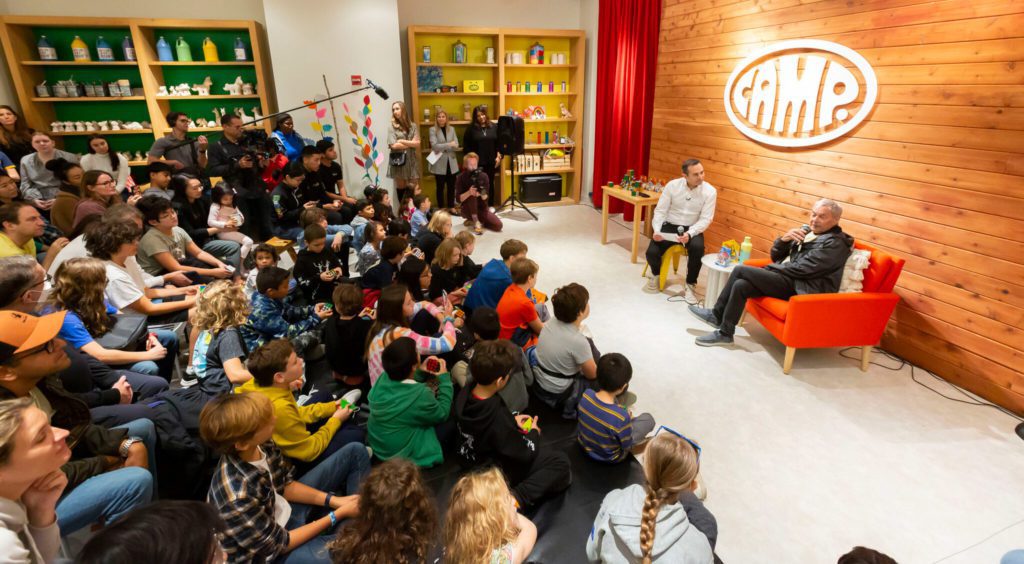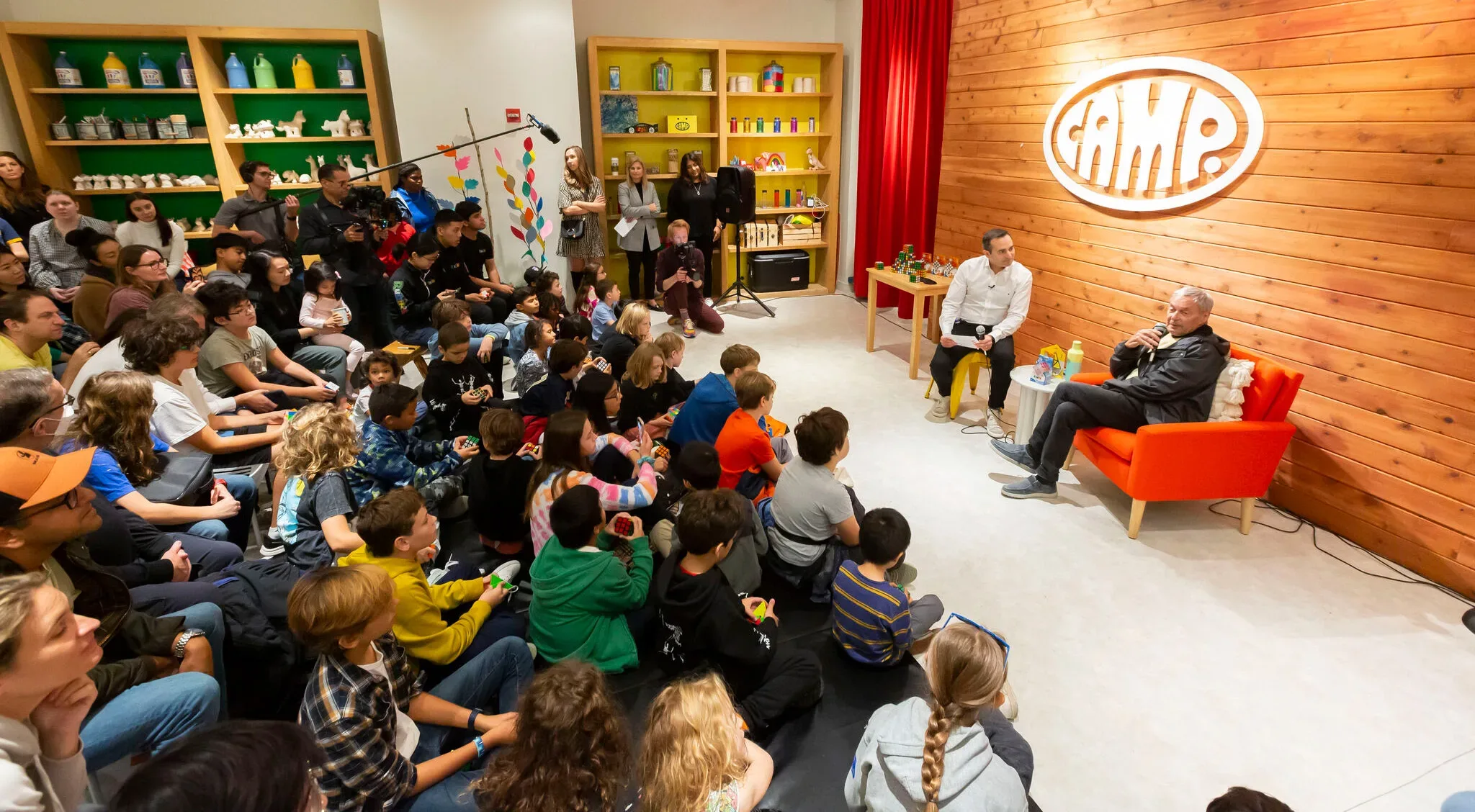
There are few toys more iconic than the Rubik’s Cube. After 48 years on the market and the release of a myriad of products based on the original cube, the Rubik’s Cube continues to puzzle kids and adults alike to this day.
In partnership with CAMP, Spin Master hosted Twist, Turn, Learn: Meet Ernő Rubik, a New York City-based event that allowed kids and toy enthusiasts to meet the inventor of the Rubik’s Cube: Professor Ernő Rubik.
“You have to not forget to begin to be curious about novelties and try new challenges. It keeps you alive.”
—Ernő Rubik
Spin Master’s Senior Global Director of Marketing Sam Susz spoke with Rubik about the moment in 1974 he created what would become a toy and how it’s affected generations of players. Then, kids got to take the mic and ask the legendary toy inventor questions of their own — and The Toy Book also got some insight on burning questions of our own!
Sam Susz: What is it about puzzles and the Rubik’s Cube that make them so fun for kids?
Ernő Rubik: American people, especially for the young ones, like to prove we are capable of doing everything. And many of them succeed, some of them not. But don’t be afraid, it’s very important to try, No. 1 using your brain — and the important thing is to enjoy what you are doing. Unfortunately, when we become adults, we have so many thoughts, you have to not forget to begin to be curious about novelties and try new challenges. It keeps you alive.
SS: If you describe the cube today to a 5- or 6-year-old and how to solve it, how would you go about it?
ER: The cube was made for questions. In my view, I never wrote about the solution of the cube because I think everybody has a chance to discover this. I remember when I was younger, whenever I was looking for the solution, I would try to find out on my own. And that’s what I can suggest to everyone. To follow a rule is much easier … than to find out your own way.
SS: How long did it take you to actually solve the Rubik’s Cube the first time?
ER: I was thinking about trying to understand how it works, what does it mean, and progress to the solution.
Audience Member: How did you create the cube?
ER: Behind the cube is an irreplaceable principle that it is a much more general thing than one object. And based on that principle, you can have so many objects which are challenging and all of that depends on the possibilities of three-dimensional movement and trying to understand face-to-face movements in space.
AM: Why did you want to come up with the Rubik’s Cube?
ER: It’s a very strong pressure when you start questioning why. Why is the sun rising? Why are we hungry? So many major questions of why people are looking for something else.
AM: What method did you use to solve it?
ER: At first, I was doing the corners and edges and finally the last two edges … It’s like riding a bike, you still know how to solve the Rubik’s Cube from time to time.
AM: How did you feel when you saw your first Rubik’s Cube in a store?
ER: That was a big achievement. It was not easy to find manufacturers because it was a high price, especially in Hungary at that time. It took about six years from the idea to find a way.
The Toy Book: Did you expect six generations of kids would be playing with your invention or did you invent it as a tool?
ER: It first was to fulfill my curiosity. What I would like to see, but I imagined it was possible. And that was the most exciting part. But after I solved the technical problem, I was thinking, “What can I do with this?” Then, we found out it was possible to manufacture, but it was a hard time finding a solution for the manufacturers. It depends on if you are patient enough, and the long enough you wait, it can be achievable.
TB: A lot of products have been made around the concept, like a Rubik’s clock and various other items. Do you have any that you found to be extremely creative?
ER: The shadow of the cube doesn’t mean that you are not able to sell millions of [a different variation] … Everything has its collector and its content of interest and specialties.
The Rubik’s Cube has been a cultural mainstay for almost 50 years, and while still a top-selling item, that hasn’t stopped Spin Master from trying its hands at new designs. The company’s most recent innovation is the Phantom, a classic three-by-three cube that looks black until you start to play with it. Using thermochromic technology, the tiles change color once touched and the goal is to solve the cube before it fades back to black!

